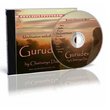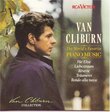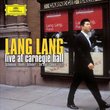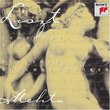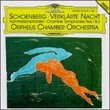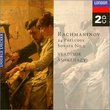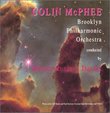| All Artists: Toru Takemitsu, Seiji Ozawa, Hiroshi Wakasugi, Tashi, Yonako Nagano, Boston Symphony Orchestra, Yuji Takahashi, Peter Serkin Title: Takemitsu: A Flock Descends into the Pentagonal Garden Members Wishing: 4 Total Copies: 0 Label: Deutsche Grammophon Release Date: 2/8/2005 Genres: Pop, Classical Styles: Vocal Pop, Opera & Classical Vocal, Chamber Music, Forms & Genres, Concertos, Historical Periods, Modern, 20th, & 21st Century, Instruments, Keyboard, Symphonies Number of Discs: 1 SwapaCD Credits: 1 UPC: 028947753810 |
Search - Toru Takemitsu, Seiji Ozawa, Hiroshi Wakasugi :: Takemitsu: A Flock Descends into the Pentagonal Garden
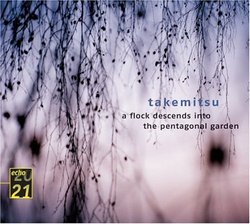 | Toru Takemitsu, Seiji Ozawa, Hiroshi Wakasugi Takemitsu: A Flock Descends into the Pentagonal Garden Genres: Pop, Classical
|
Larger Image |
CD DetailsSimilar CDsSimilarly Requested CDs
|
CD ReviewsA Welcome Re-Issue of Takemitsu's View of the Natural World Grady Harp | Los Angeles, CA United States | 07/20/2005 (4 out of 5 stars) "Toru Takemitsu continues to be talked about as an important influence on contemporary composition. His music is not easily accessible to the musical mind that requires a semblance of order: the majority of his works are intimations of Nature and as such incorporate the randomness of a world of chance. Though his music is often named for particular aspects of natural phenomena (not unlike the currently popular Tan Dun), his intention is not to mimic but to seek the essence of the natural elements. This recording was made in the 1970s with longtime Takemitsu admirer Seiji Ozawa and the Boston Symphony with guests clarinetist Richard Stolzman and the chamber ensemble Tashi. The opening work 'For Clarinet, Violin, Violoncello, Piano And Orchestra' is pure chamber music in nature with extension of sound colors into the orchestral fabric. 'A Flock Descends into the Pentagonal Garden' (note: his titles are some of his finest poetic constructions!) is an elegant admixture of East and West, with the strings of the orchestra manipulated in ways resembling Oriental forms, a leading characteristic of his 'sound'. The tonalities focus then flow out of focus, become ethereal at one moment then edgy the next. The chamber works included on this recording include his trilogy Sacrifice/Ring/Valeria and Tashi gives a profound reading, somehow making the work organic despite its tendency to wander like air over water. Takemitsu's music is best heard on programs that complement the unique use of the orchestra with other more tonal, traditional pieces, and for the novice this recording may be just a bit too much of a good thing. But for those who are searching for historically significant and well-performed examples of Takemitsu's output, then this collection is one of the best. Grady Harp, July 05 " Important middle-period works in historical performances hap Christopher Culver | 12/03/2006 (5 out of 5 stars) "This collection of pieces by Takemitsu comes in Deutsche Grammaphon's "Echo 20/21" series of reissues of contemporary music. The original was a Japanese release unavailable elsewhere except as a rare import, and its wider ability is to be welcomed, as it holds some of Takemitsu's most important pieces from the 1960s and 1970s, though generally skipping over his modernist apogee of the early 1970s.
The earliest four pieces, dating from the 1960s, are chamber works and are performed by an ensemble of leading Japanese musicians conducted by Hiroshi Wakasugi. The first three, "Ring", "Sacrifice" and "Valeria" form a trilogy, while "Stanza I" is an independent work from Takemitsu's most overtly modernistic period. "Ring" for flute, terz guitar, and lute (1961) is an interesting use of aleatorism much like that of Boulez's third piano concerto. The work consists of four sections, "General Theme", "Retrograde", "Inversion", and "Noise", which can be played in any order (here it is R-I-N-G). Within each of the sections, there's few fixed indications of tempi, dynamics, or articulation. "Sacrifice" for flute, lute, and vibraphone (1962) goes even further with aleatorism, where the players are essentially independent from each other each according to his whim, yet the result is surprisingly natural and harmonious. Finally, "Valeria" (1965, rev. 1969) consists of several sections each of which is based on the addition of certain novel timbre, first exotic string effects, then electric organ, then a duo of piccolos. "Stanza I" (1969) is the most rhythmically complex work here. The supple pulse and its scoring for guitar, harp, piano/celestra, and vibraphone makes it sound remarkably like Boulez's "Pli selon pli". But when a mezzo-soprano enters, singing a text from Wittgenstein, the work becomes more overtly dramatic, even with something of the spirit of a "happening", unlike the somewhat frozen music of the French composer. It's my favourite piece here due to its engaging spirit and wit. The later two pieces, dating from the second half of the '70s, are orchestral works written to highlight the capabilities of four American performers. These are Peter Serkin (piano), Ida Kavafian (violin), Fred Sherry (cello), and Richard Stoltzmann (clarinet), together known as the TASHI ensemble. They perform here with the Boston Symphony Orchestra conducted by Seiji Ozawa. The concerto for four-player ensemble and orchestra "Quatrain" (1975) is, as its title suggests, abounding with references to the number four. There are four soloists, sections are built with groups of four bars, and the intervals involve the number. It's also something of a hommage to Messiaen, one of Takemitsu's great heros, as TASHI was originally formed to play Messiaen's "Quatuor". Indeed, it sometimes seems an expanded version of Messiaen's great work, with the melodic lines of the quartet accompanied by chords in the orchestra. One might even see it as Takemitsu's great postmodernistic statement. "A Flock Descends into the Pentagonal Garden" (1977) is a single-movement work that may be seen as the first piece of the "late Takemitsu", where he entirely leaves behind the avant-garde style of the early 70s and embarks on that "sea of tonality" that was to last for the rest of his life. Like "Quatrain", it too is based around a single number, in this case five. Takemitsu says that he dreamed of a flock of white birds entered a pentagonal garden lead by one black bird, and this inspired him to create one of the most strictly serialised pieces of his career. It begins with a pentatonic scale, as if only the black keys of the piano were used, and eventually the seven "white notes" join it. As for whether the piece is enjoyable without doting on its formal scheme, I'm uncertain. The problem is not that it sounds rigorous and mathematical--Takemitsu was a master of writing twelve-tone works that sound gentle and calm--but rather that it doesn't differentiate itself much from other works. Takemitsu's late pieces tend to all sound the same, and even those who have championed his music, such as Oliver Knussen, admit that they all seem cut from the same general roll. While some late works such as "Dream/Window" and the percussion concerto "From me flows what you call Time" stand out as sure masterpieces, "A Flock Descends..." has little to recommend it outside of some occasional use of aggressive percussion, a violence wholly absent from later work. The liner notes here are fairly uninformative. Fans of the composer would do well to seek out Peter Burt's THE MUSIC OF TORU TAKEMITSU (Cambridge University Press, paperback 2006). One also regrets that "Ring", "Sacrifice", and "Valeria" are not split into multiple tracks on the CD according to their sections. If you know little about the music of this great Japanese composer, the chamber music disc on Naxos makes a great introduction. And if you're drawn to further explore his intriguing body of work, this DG reissue is a good purchase." |

 Track Listings (6) - Disc #1
Track Listings (6) - Disc #1